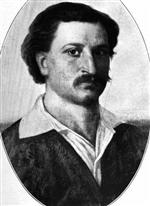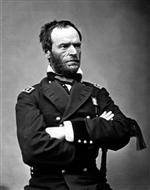The Violence at Camp Jackson

During the march by the Federals to Camp Jackson, many of the citizens of St. Louis quickly found out and began to follow the troops to Camp Jackson. These people were both pro-Union and pro-Southern men. Many of the civilians were armed. After receiving the surrender of the State Militiamen at Camp Jackson, it took the Federals quite a while to organize the prisoners' march back to the Arsenal. During this time, the Federal Volunteers were subjected to verbal insults and objects thrown by the crowd. At one point a man tried to force his way through the Federals in order to gain access to the prisoners. He was pushed back and stumbled into a nearby ditch. When the man crawled out of the ditch, he pulled a pistol from his coat and began firing at the Federals. At first the Federal Volunteers responded by firing warning shots over the heads of the civilians. But later there was firing into the crowd of civilians. By the time order had been restored to the scene, 28 people, including two women and a small child, had been killed and many others wounded. Of these 28, three were State Militiamen and the rest civilians. One of the Federal Volunteers in Company F, Third Missouri Volunteer Regiment, had been killed during the shooting. Captain Constantin Blandowski, in command of Company F in the Third Missouri Volunteer Regiment, had been mortally wounded and would die the next day becoming the first Union officer to be killed in action during the Civil War. [44]

William T. Sherman, at the time was a private citizen living in St. Louis, was at the scene near Lindell Grove with his son, Willie. He later wrote about the violence that occurred at Camp Jackson: [45]
A crowd of people was gathered around, calling to the prisoners by name, some hurrahing for Jeff Davis, and others encouraging the troops . . . The man had in his hand a small pistol, which he fired off, and I heard that the ball had struck the leg of one of Osterhaus's staff; the regiment stopped; there was a moment of confusion, when the soldiers of that regiment began to fire over our heads in the grove. I heard the balls cutting the leaves above our heads, and saw several men and women running in all directions, some of whom were wounded. Of course there was a general stampede.
By the time order had been restored to the scene, 28 people, including two women and a small child, had been killed and many others wounded. Of these 28, three were State Militiamen and the rest civilians. One of the Federal Volunteers in Company F, Third Missouri Volunteer Regiment, had been killed during the shooting. Captain Constantin Blandowski, in command of Company F in the Third Missouri Volunteer Regiment, had been mortally wounded and would die the next day becoming the first Union officer to be killed in action during the Civil War. Remember that the First Battle of Bull Run (or Manassas) did not take place until July 21st. [46]
